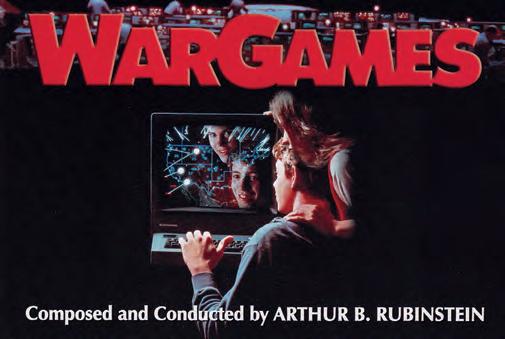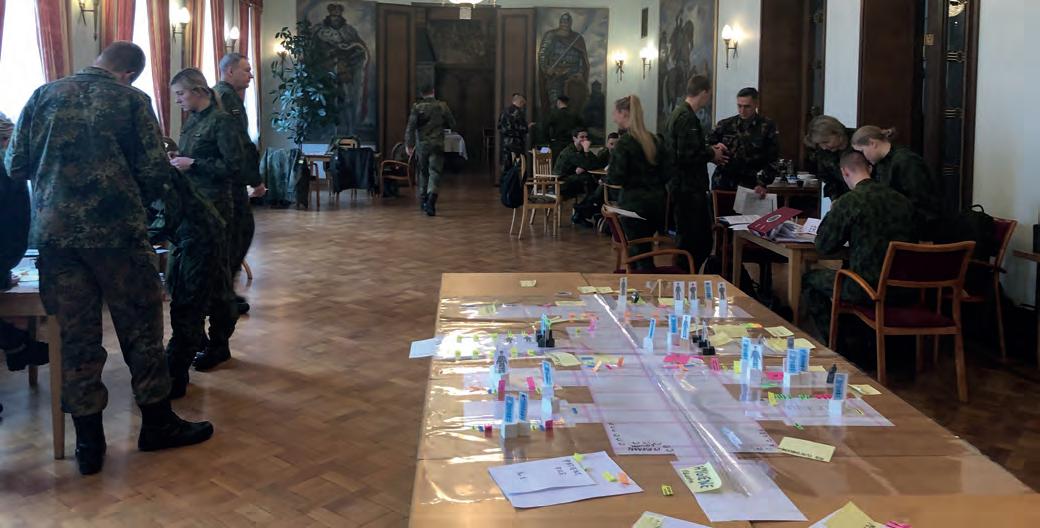
5 minute read
Improving Healthcare trough (War)Gaming
MEDICAL TABLE TOP EXERCISES Medical Table Top Exercises – Improving Healthcare trough (War)Gaming
J. Muntenaar
Advertisement
WOPR: Shall we play a game? David: How about Global Thermonuclear War. WOPR: Wouldn‘t you prefer a good game of chess? David: Later. Let‘s play Global Thermonuclear War. WOPR: Fine. David: What is the primary goal? WOPR: You should know that, Professor. You programmed me. David: Oh, c‘mon. What is the primary goal? WOPR: To win the game. David: Is this a game or is it real? WOPR: What‘s the difference? David: Oh, wow.
Movie Poster Wargame
The text above is a scene from the 1983 movie “WARGAMES”. The film about a young hacker David Lightman who unwittingly accesses a US military supercomputer WOPR (War Operation Plan Response) programmed to predict possible outcomes of nuclear war. David gets WOPR to run a nuclear wargaming simulation, believing it to be a computer game. WOPR now tied into the nuclear weapons control system, unable to tell the difference between wargaming and reality, attempts to start World War III.
Wargaming a technique as old as war itself is seeing a revival in recent years in all fields of military including healthcare. During the past year, the Multinational Medical Coordination Centre (MMCC) organised several wargames to assist military medical units from different nations in achieving their goals. The simple (war)gaming techniques are a very efficient and cost-effective way to train units, build and test concepts or rehearse an operation or exer
Hellwig‘s Board Game

cise. The MMCC sees wargaming as a tool/technique for exploring human decision-making.”
This article will discuss various techniques of wargaming and how these are used to improve military healthcare. I will first provide some historical background on wargaming, followed by a short review of the six essential elements the MMCC uses for a wargame. Then I will discuss three different types of wargaming based on their purpose, level of play and outcome.
A SHORT HISTORY OF WARGAMING
Wargaming is as old as armies fight, assessing the best strategy against their opponents. In its modern form it originated from the game invented in 1870 by Johann Hellwig a college professor in Braunschweig (Prussia). Many of his students where young noblemen destined for military service as an officer. Hellwig designed a game based on chess by which he could teach the basic principles of warfare to his students. The game played on a grid of color-coded squares representing different types of terrain. Players could set up the layout of the battlefield by moving the colour coded terrain grids prior to a game. Others followed Hellwig with their version of a wargame.
A criticism of these wargames was that the pieces moved in chess-like fashion, which of course, does not reflect how real troops move. This led in 1812 to the presentation by the Prussian noblemen and Officer George von Reisswitz of a new board game for the representation of tactical manoeuvres under the guise of a “KRIEGSSPIEL” - Wargame. After a demonstration in 1824 by von Reisswitz son

Lithuanian R2 Table Top Exercise Overview gameroom
to the Prussian King and the Chief of the Prussian General Staff the improved version became the Prussian Army “Kriegsspiel”. Other nations followed when Prussia defeated France in the Franco-Prussian War, credited by many to the Prussian wargaming tradition. Over the next two centuries, the national armed forces employed various forms of wargaming for training and planning purposes.
All through the First and Second World War, campaigns were supported by wargaming efforts. A famous quote on this is by Fleet Admiral Chester Nimitz (USN) who explained after WW2: “The war with Japan had been re-enacted in the game rooms here by so many people and in so many different ways that nothing that happened during the war was a surprise — absolutely nothing except the kamikaze tactics towards the end of the war; we had not visualized those.”
SIX ESSENTIAL ELEMENTS
At the core of a good (medical) wargame there are six essential elements: 1. Purpose: why are we doing this? 2. Objectives: what is it we want to achieve? 3. The Wargame: written in terms of Scenario, Scene and
Setting; 4. Game rules: explicit or understood regulations/principles to conduct the Wargame; 5. Players / Participants: sometimes known as the Training Audience (TA); 6. Facilitator(s): to guide exercise play making sure rules are followed and issues are explored as thoroughly as possible.
The purpose and objective of a wargame.
When requested to support a unit with a wargame the first question that comes to mind is “what is the aim of the game?” Take a couple of minutes to discuss with the unit and define the reason they want to execute the wargame (purpose), what they expect to accomplish (objectives), and the limitations of the wargame (scope). These parameters need to be established to keep the wargame focused.
Purpose – the reason. During conversations with the requesting unit the purpose is refined. The tree examples below for a similar level Table Top Exercise (TTX) for a Role 2 Basic (R2B) hospital from tree different organisations (Norway, Balkan Medical Task Force and Lithuania) show a different purpose and therefore lead to a different type of TTX. 1. The purpose for the Norwegian R2B TTX was “To test, evaluate and improve the internal operational procedures as preparation for NATO Medical Evaluation.” 2. The purpose for the Balkan Medical Taskforce (BALKAN
MEDTF) was “To refine and improve the internal MASCAL response procedures as preparation for the execution of the NATO medical exercise VW19.” 3. The purpose for the Lithuanian R2B TTX was “To improve the R2B internal operational procedures and the interface with the Civilian - Medical world.”
Objective – outcome to achieve.
The main objective to achieve can be derived from the stated purpose. In the case of the Norwegian R2B, the outcome is the “Improved internal operational procedures with a focus on passing a NATO Medical Evaluation.”










